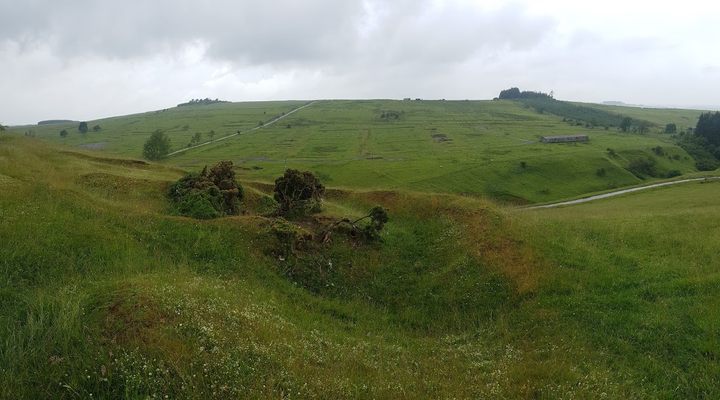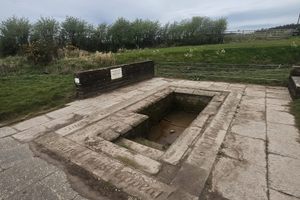About
Due to its extraordinary level of preservation, Stobs Camp is an internationally important First World War site. This rather bleak and exposed Scottish hillside was chosen for its remote location. For many years, it was shrouded in secrecy.
The military training camp at Stobs was established in 1902 and became important at the outbreak of WWI. After hosting a series of Officers' Training Corps, it became an internment camp for various "aliens" and then a prisoner of war camp. The detainees were mostly German. In addition to captured military personnel, thousands of civilians from Britain's German communities were detained in prison camps during the war.
Looking across from the hill, the scale of the camp becomes apparent. It was built with four compounds comprising 80 huts, which could accommodate 4,500 men. Buildings included a hospital, operating block, mortuary, bakery, post offices, cook houses, bath houses, workshops, and a canteen. Only a small number of buildings have survived, but remain in excellent condition, despite the best efforts of nearby sheep scratching themselves of the aging timber. You can see a number of officers' quarters, drying huts, quartermaster’s store, bathing pond, and more. You can still see the outlines of practice trenches in the ground.
A small cemetery was added in 1915, a burial place for prisoners who died at Stobs Camp. It contains the remains of 35 soldiers, four sailors, and six German civilians. The memorial stone has an inscription "To our comrades who died far from home” written in German.
A lot is still to be learned about the full history of the site. Archaeology Scotland regularly conducts educational workshops and training sessions for volunteers. It shares its findings through a dedicated website, social media, walks, talks, events, performances, exhibitions, and conferences.
Related Tags
Know Before You Go
The site is free to enter. There is an excellent free "heritage trail" audio tour. You will hear from Reene Curry who moved with her family to Stobs in 1932 when she was just two years old. She grew up on the estate during the interwar and Second World War periods. It is recommended that you download this in advance, as cell signal can be unreliable.
Please take care while you explore the site as the ground can be uneven in places. Please do not enter buildings as the structure may be unsafe or may contain hazardous materials.
The site is a working farm so please respect any directions given by local farmers, respect their livestock and remember to follow the Scottish outdoor access code. This includes closing gates you have opened, not blocking farm tracks or roads, and taking your litter away with you.
Plentiful parking is available and the 128 bus from Hawick stops a short walk away from the site.
Flavors of Scotland: Beyond the Haggis
Smoked seafood, single malt whisky, and warm hospitality.
Book NowPublished
January 21, 2022































